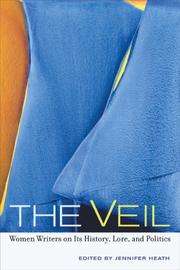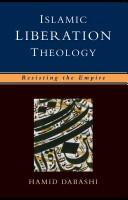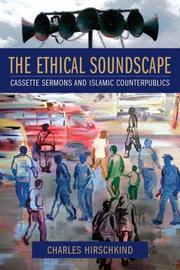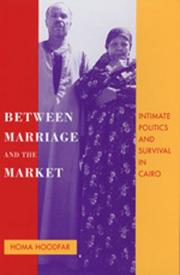| Listing 1 - 10 of 12 | << page >> |
Sort by
|
Book
ISBN: 1139626825 1108654363 1107039924 110871420X 1108619177 9781108654364 9781139626828 9781107039926 Year: 2018 Publisher: Cambridge Cambridge University Press
Abstract | Keywords | Export | Availability | Bookmark
 Loading...
Loading...Choose an application
- Reference Manager
- EndNote
- RefWorks (Direct export to RefWorks)
What happens when a corporate subsidiary or network company is unable to pay personal injury victims in full? This book sets out to tackle the 'insolvent entity problem', especially as it arises in cases of mass wrongdoing such as those involving asbestos exposure and defective pharmaceuticals. After discussing the nature of corporate groups and networks from the perspectives of business history, organisation studies, and social theory, the book assesses a range of rules and proposed rules for extending liability for personal injuries beyond insolvent entities. New proposals are put for an exception to the rule of limited liability and for the development of a flexible new tort based on conspiracy that encompasses not only control-based relationships but also horizontal coordination between companies. The book concludes with a general discussion of lessons learned from debates about extended liability and provides guidelines for the development of new liability rules.
Tort liability of corporations. --- Corporation law. --- Corporate veil. --- Company law --- Corporate law --- Corporations --- Law, Corporation --- Trusts, Industrial --- Commercial law --- Tort liability of nonprofit organizations --- Nonprofit organizations --- Corporate veil-piercing --- Disregard of corporate entity --- Disregarding the corporate entity --- Piercing the corporate veil --- Veil, Corporate --- Veil-piercing, Corporate --- Corporation law --- Limited liability --- Law and legislation --- Law
Book
ISBN: 3839430941 9783839430941 Year: 2015 Publisher: Bielefeld Transcript
Abstract | Keywords | Export | Availability | Bookmark
 Loading...
Loading...Choose an application
- Reference Manager
- EndNote
- RefWorks (Direct export to RefWorks)
Die stereotype Stigmatisierung des Kopftuchs ist eine Praxis des antimuslimischen Rassismus! Auf der Basis qualitativer Interviewdaten legt Florian Kreutzer alltägliche Praktiken rassistischer Diskriminierung, des Doing Race and Racial Othering offen - und ebenso die Praktiken und Möglichkeiten des Undoing Race, des Durchkreuzens, Unterlaufens, Überwindens und Ungeschehen-Machens der rassistischen Produktion von Andersheit. Die Erzählungen verschleierter Frauen machen deutlich, dass sie sich in ihrer Art und Weise, Familie und Beruf zu vereinbaren, nicht wesentlich von anderen Frauen unterscheiden. Die rassistische Produktion von Andersheit wird so als eine soziale Praxis und strukturelle Dimension moderner Gesellschaften erkennbar. Unter Mitarbeit von Sümeyye Demir. »Insbesondere angesichts der Debatten um Integration und Flüchtlingskrise ist dieses Buch unbedingt empfehlenswert.« Elisabeth Mantl, http://www.elisabeth-mantl.de, 12 (2015) »Man kann diesem Buch nur eine breite Leserschaft wünschen.« Dirk Pilz, Frankfurter Rundschau, 10.06.2015 Besprochen in: IDA-NRW, 21/2 (2015) www.frauensolidaritaet.org VKRG inform, 4 (2015) Portal für Politikwissenschaft, 04.02.2016, Wolfgang Denzler
Gender; Islam; Rassismus; Migration; Integration; Stigma; Kopftuch; Geschlecht; Islamwissenschaft; Gender Studies; Arbeits- und Industriesoziologie; Racism; Veil; Islamic Studies; Sociology of Work and Industry --- Gender Studies. --- Integration. --- Islam. --- Islamic Studies. --- Migration. --- Racism. --- Sociology of Work and Industry. --- Stigma. --- Veil.

ISBN: 1282772317 9786612772313 0520941608 9780520941601 9780520250406 0520250400 9780520255180 0520255186 9781282772311 661277231X Year: 2008 Publisher: Berkeley University of California Press
Abstract | Keywords | Export | Availability | Bookmark
 Loading...
Loading...Choose an application
- Reference Manager
- EndNote
- RefWorks (Direct export to RefWorks)
This groundbreaking volume, written entirely by women, examines the vastly misunderstood and multilayered world of the veil. Veiling- of women, of men, and of sacred places and objects-has existed in countless cultures and religions from time immemorial. Today, veiling is a globally polarizing issue, a locus for the struggle between Islam and the West and between contemporary and traditional interpretations of Islam. But veiling was a practice long before Islam and still extends far beyond the Middle East. This book explores and examines the cultures, politics, and histories of veiling. Twenty-one gifted writers and scholars, representing a wide range of societies, religions, ages, locations, races, and accomplishments, here elucidate, challenge, and/or praise the practice. Expertly organized and introduced by Jennifer Heath, who also writes on male veiling, the essays are arranged in three parts: the veil as an expression of the sacred; the veil as it relates to the emotional and the sensual; and the veil in its sociopolitical aspects. This unique, dynamic, and insightful volume is illustrated throughout. It brings together a multiplicity of thought and experience, much of it personal, to make readily accessible a difficult and controversial subject. Contributors: Kecia Ali, Michelle Auerbach, Sarah C. Bell, Barbara Goldman Carrel, Eve Grubin, Roxanne Kamayani Gupta, Jana M. Hawley, Jasbir Jain, Mohja Kahf, Laurene Lafontaine, Shireen Malik, Maliha Masood, Marjane Satrapi, Aisha Shaheed, Rita Stephan, Pamela K. Taylor, Ashraf Zahedi, Dinah Zeiger, Sherifa Zuhur
Veils --- Veils in literature. --- Headgear --- Hijab (Islamic clothing) --- Social aspects. --- History. --- american muslim women. --- amish veil. --- community. --- controversial. --- cultural studies. --- dress code. --- emotional. --- expression of the sacred. --- gender studies. --- gospel. --- groundbreaking. --- hasidic women. --- hijab. --- identity. --- india. --- islam. --- islamic dress. --- male veiling. --- medieval europe. --- middle east. --- modesty. --- mourning. --- muslim women. --- patriarchy. --- religious studies. --- sensual. --- separation. --- seven veils. --- sociopolitical. --- trauma. --- veil. --- veiling. --- wearing a veil. --- wedding veil. --- womanhood. --- women.

ISBN: 052187064X 9780521870641 9780511487965 9780521187381 9780511261503 0511261500 0511487967 0511259735 9780511259739 0511260938 9780511260933 9780511260384 0511260385 0521187389 1107171741 1280749482 0511320442 Year: 2007 Volume: 139 Publisher: Cambridge, U.K. New York Cambridge University Press
Abstract | Keywords | Export | Availability | Bookmark
 Loading...
Loading...Choose an application
- Reference Manager
- EndNote
- RefWorks (Direct export to RefWorks)
In this 2006 text, Daniel M. Gurtner examines the meaning of the rending of the veil at the death of Jesus in Matthew 27:51a by considering the functions of the veil in the Old Testament and its symbolism in Second Temple and Rabbinic Judaism. Gurtner incorporates these elements into a compositional exegesis of the rending text in Matthew. He concludes that the rending of the veil is an apocalyptic assertion like the opening of heaven revealing, in part, end-time images drawn from Ezekiel 37. Moreover, when the veil is torn Matthew depicts the cessation of its function, articulating the atoning role of Christ's death which gives access to God not simply in the sense of entering the Holy of Holies (as in Hebrews), but in trademark Matthean Emmanuel Christology: 'God with us'. This underscores the significance of Jesus' atoning death in the first gospel.
Veil of the Temple (Jerusalem) --- Bible. --- Bible. N.T. Evangiles. Matthieu (anglais). 2007. Gurtner, D. --- 226.2 --- 225*5 --- Curtain of the Temple (Jerusalem) --- Inner Veil of the Temple (Jerusalem) --- Parokhet (Jerusalem) --- Temple Curtain (Jerusalem) --- Temple Veil (Jerusalem) --- Draperies --- Evangelie volgens Matteüs --- Laatste avondmaal. Proces van Jezus. Lijden. Kruisiging --- 225*5 Laatste avondmaal. Proces van Jezus. Lijden. Kruisiging --- Veils. --- Headgear --- Hijab (Islamic clothing) --- Bible --- Evangelie volgens Matteus --- Evangelie volgens Matthéüs --- Matʻae pogŭm --- Matai den --- Matai ni yoru fukuinsho --- Matius (Book of the New Testament) --- Mattá --- Matteo (Book of the New Testament) --- Matteus --- Matthäusevangelium --- Matthéüs --- Matthew (Book of the New Testament) --- Matthieu (Book of the New Testament) --- Criticism, interpretation, etc. --- Arts and Humanities --- Religion
Book
ISBN: 9780804776844 9780804776851 0804776849 0804776857 0804791163 Year: 2014 Publisher: Stanford, Calif. Stanford University Press
Abstract | Keywords | Export | Availability | Bookmark
 Loading...
Loading...Choose an application
- Reference Manager
- EndNote
- RefWorks (Direct export to RefWorks)
The headscarf is an increasingly contentious symbol in countries across the world. Those who don the headscarf in Germany are referred to as ""integration-refusers."" In Turkey, support by and for headscarf-wearing women allowed a religious party to gain political power in a strictly secular state. A niqab-wearing Muslim woman was denied French citizenship for not conforming to national values. And in the Netherlands, Muslim women responded to the hatred of popular ultra-right politicians with public appeals that mixed headscarves with in-your-face humor. In a surprising way, the headscarf-a g
Islam --- Human rights --- Sociology of culture --- Hijab (Islamic clothing) --- Muslim women --- Citizenship --- National characteristics --- Political aspects --- Clothing --- France --- Netherlands --- Germany --- Turkey --- Sociology of religion --- Race --- Nationality --- Discourse analysis --- Politics --- Legislation --- Book --- Integration --- Veil --- Citizenship -- Cross-cultural studies. --- Hijab (Islamic clothing) -- Political aspects -- Cross-cultural studies. --- Muslim women -- Clothing -- Political aspects -- Cross-cultural studies. --- National characteristics -- Political aspects -- Cross-cultural studies.
Book
ISBN: 9789044119671 Year: 2008 Publisher: Antwerpen Garant
Abstract | Keywords | Export | Availability | Bookmark
 Loading...
Loading...Choose an application
- Reference Manager
- EndNote
- RefWorks (Direct export to RefWorks)
De hoofddoek heeft nog veel meer betekenissen dan enkel de religieuze connotatie die nu het westerse hoofddoekendebat beheerst. De auteur toont in dit boek aan dat de hoofddoek en het haar complexe en veelzijdige symbolen zijn. Zij plaatst de betekenisveranderingen van hoofddoek en haar in een historisch en intercultureel perspectief, waarbij de seksuele betekenis één van de mogelijkheden is.
Hoofddoek --- 668.5 Migrantenvrouwen --- #SBIB:39A9 --- #SBIB:39A10 --- #SBIB:316.331H531 --- 315.1 --- rituelen --- godsdienst --- hoofddoeken --- 39 --- Hoofddoeken --- Migranten --- Antropologie --- Medische antropologie / gezondheid / handicaps --- Antropologie: religie, riten, magie, hekserij --- Godsdienstige praktijken: deelname volgens leeftijd en sociale categorieën --- Vrouwenemancipatie algemeen --- haar --- culturele antropologie --- Biological anthropology. Palaeoanthropology --- Sociology of the family. Sociology of sexuality --- seksualiteit --- Haar (vrouw) --- 308.1 --- Hair --- Social aspects --- Sex (Psychology) --- Addresses, essays, lectures --- Cultural aspects --- Vrouwenemancipatie ; algemeen --- Identity --- Islam --- Psychoanalysis --- Sexuality --- Appearance --- Female body --- Book --- Anthropology --- Veil
Book
ISBN: 9789462671140 9462671141 Year: 2017 Publisher: Berchem EPO
Abstract | Keywords | Export | Availability | Bookmark
 Loading...
Loading...Choose an application
- Reference Manager
- EndNote
- RefWorks (Direct export to RefWorks)
Een essay over identiteit, racisme, het vrouwenlichaam als inzet van de strijd om de vrijheid, en onze bange samenleving.Bron : http://www.epo.com
vrijheid van meningsuiting --- Dutch literature --- allochtonen --- racisme --- diversiteit --- Sociology of minorities --- Racisme --- Vrijheid van meningsuiting --- Rechten van de vrouw --- multiculturele samenleving --- 325.141 --- 313.1 --- migrantenbeleid --- 325 --- migrantenbeleid - diversiteit --- Rassen- en minderhedenvraagstuk ; algemeen --- Lamrabet, Rachida --- #SBIB:39A6 --- #SBIB:316.8H16 --- Etniciteit / Migratiebeleid en -problemen --- Welzijns- en sociale problemen: migranten, rassenrelaties --- Allochtonen --- Minderheidsgroepen --- Sociologie --- Minderheden --- België, Brussel, Antwerpen --- Identiteit --- Migrantenproblematiek --- Multiculturele samenleving --- Sociology of the family. Sociology of sexuality --- Vrouwenrechten --- Allochtoon --- Minderheid --- Autochtoon --- Erfelijkheidsleer --- Stadssamenleving --- Verpleegkunde --- Persoon met een migratieachtergrond --- Belgium --- Essays --- Islam --- Racism --- Female body --- Book --- Veil

ISBN: 9780415771559 9780415771542 9780203928387 0203928385 0415771544 0415771552 1135982961 9781135982966 9786611394530 6611394532 128139453X 9781135982911 9781135982959 Year: 2008 Publisher: New York, NY Routledge
Abstract | Keywords | Export | Availability | Bookmark
 Loading...
Loading...Choose an application
- Reference Manager
- EndNote
- RefWorks (Direct export to RefWorks)
With the War on Terror and the perceived clash between the West and Islam being a highly topical issue in world politics today, this book is a radical piece of counter-intuitive thinking on the clash of civilizations theory and global politics.
Religious awakening --- Islam and world politics --- Islam --- Globalization --- Islamic renewal --- Réveil religieux --- Politique mondiale --- Mondialisation --- Renouveau islamique --- Religious aspects --- Islam. --- Aspect religieux --- Histoire --- Islamic countries --- Pays musulmans --- Politics and government --- Politique et gouvernement --- 297*35 --- 297*35 Islam en het Westen --- Islam en het Westen --- Islamic reform --- Islamic revivalism --- Islamic revivalist movement --- Ṣaḥwah (Islam) --- Wahhābīyah --- World politics and Islam --- World politics --- Global cities --- Globalisation --- Internationalization --- International relations --- Anti-globalization movement --- Religious aspects&delete& --- Reform --- Renewal --- Politics and government. --- Islam and world politics. --- the clash of civilizations --- global politics --- 9-11 --- Islam and the West --- colonialism --- the US --- new Islamic theodicy --- Islamic liberation theology --- political Islamism --- US foreign policy

ISBN: 0231138180 0231510888 9780231138185 9780231138192 9780231510882 0231138199 1281869023 9786613792273 9781281869029 6613792276 Year: 2006 Publisher: New York
Abstract | Keywords | Export | Availability | Bookmark
 Loading...
Loading...Choose an application
- Reference Manager
- EndNote
- RefWorks (Direct export to RefWorks)
An essential aspect of what is now called the Islamic Revival, the cassette sermon can be heard in most Middle Eastern cities, punctuating the daily routines of many men and women. Charles Hirschkind shows how these tapes provide the means by which Islamic ethical traditions recalibrate to a modern political and technological order& mdash;to its noise and forms of pleasure and boredom, but also to its political incitements and call for citizen participation. Focusing on Cairo's popular neighborhoods, Hirschkind highlights the pivotal role sermon tapes now play in an expanding arena of Islamic
Da'wah (Islam) --- Religious awakening --- Islamic sermons --- Communication --- Audiocassettes --- Islamic fundamentalism --- Islam and politics --- Réveil religieux --- Sermons islamiques --- Intégrisme islamique --- Islam et politique --- Islam. --- Religious aspects --- Islam --- Aspect religieux --- Daʻwah (Islam) --- Islamic sermons, Arabic --- Dawah (Islam) --- Islamic sermons, Arabic. --- Audiocassettes. --- #SBIB:316.331H421 --- #SBIB:316.331H531 --- #SBIB:39A77 --- #SBIB:39A10 --- Audio cassettes --- Audiocassette recordings --- Audiocassette tapes --- Audiotape cassettes --- Cassettes, Audio --- Compact audiocassettes --- Audiotapes --- Arabic Islamic sermons --- Morfologie van de godsdiensten: Islam --- Godsdienstige praktijken: deelname volgens leeftijd en sociale categorieën --- Etnografie: Noord-Afrika en het Midden-Oosten --- Antropologie: religie, riten, magie, hekserij --- Communication -- Religious aspects -- Islam. --- Daʿwah (Islam). --- Islam and politics -- Egypt. --- Islamic fundamentalism -- Egypt. --- Religious awakening -- Islam. --- Da°wah (Islam) --- Religion --- Philosophy & Religion --- Réveil religieux --- Intégrisme islamique --- Dakwah (Islam) --- Dawa (Islam) --- Evangelistic work (Islam) --- Proselytizing --- Evangelistic work --- Missions --- Communication, Primitive --- Mass communication --- Sociology --- Religious aspects&delete& --- Religious awakening - Islam --- Communication - Religious aspects - Islam --- Islamic fundamentalism - Egypt --- Islam and politics - Egypt --- Cassette tapes (Audiocassettes) --- Tapes, Cassette

ISBN: 0520206118 0520208250 052091886X 0585032874 9780520918863 9780585032870 9780520206113 9780520208254 Year: 1997 Volume: 24 Publisher: Berkeley, California : University of California Press,
Abstract | Keywords | Export | Availability | Bookmark
 Loading...
Loading...Choose an application
- Reference Manager
- EndNote
- RefWorks (Direct export to RefWorks)
Homa Hoodfar's richly detailed ethnography provides a rare glimpse into the daily life of Arab Muslim families. Focusing on the impact of economic liberalization policies from 1983 to 1993, she shows the crucial role of the household in survival strategies among low-income Egyptians. Hoodfar, an Iranian Muslim by birth, presents research that undermines many of the stereotypes associated with traditional Muslim women. Their apparent conservatism, she says, is based on rational calculation of the costs and benefits of working within formal and informal labor markets to secure household power. She posits that increasing adherence to Islam and taking up the veil on the part of women has been partially motivated by women's desire to protect and promote their interests both within and beyond households.
Households --- Home economics --- Poor --- Sex role --- Business & Economics --- Economic History --- Economic aspects --- Marriage --- Families --- Economie domestique --- Ménages (Statistique) --- Pauvres --- Rôle selon le sexe --- Mariage --- Familles --- Cairo Metropolitan Area (Egypt) --- Caire, Agglomération du (Egypte) --- Economic conditions --- Conditions économiques --- Family and consumer sciences --- Gender role --- Sex (Psychology) --- Sex differences (Psychology) --- Social role --- Gender expression --- Sexism --- Disadvantaged, Economically --- Economically disadvantaged --- Impoverished people --- Low-income people --- Pauperism --- Poor, The --- Poor people --- Persons --- Social classes --- Poverty --- Domestic economy --- Domestic science --- Household management --- Household science --- Family life education --- Home --- Consumer education --- Formulas, recipes, etc. --- Population --- Cairo Region --- E-books --- Gender roles --- Gendered role --- Gendered roles --- Role, Gender --- Role, Gendered --- Role, Sex --- Roles, Gender --- Roles, Gendered --- Roles, Sex --- Sex roles --- arab muslim families. --- arab. --- arranged marriages. --- cairo. --- conservatism. --- consumption. --- cultural studies. --- economic liberalization policy. --- egypt. --- employment. --- ethnography. --- family. --- formal labor markets. --- gender studies. --- household economy. --- household power. --- informal labor markets. --- international migration. --- islam. --- labor market. --- love marriages. --- marital conflicts. --- marriage negotiations. --- marriage. --- modern economy. --- money management. --- muslim. --- sexual politics. --- social networks. --- suitor. --- survival strategies. --- traditional muslim women. --- wearing a veil.
| Listing 1 - 10 of 12 | << page >> |
Sort by
|

 Search
Search Feedback
Feedback About UniCat
About UniCat  Help
Help News
News